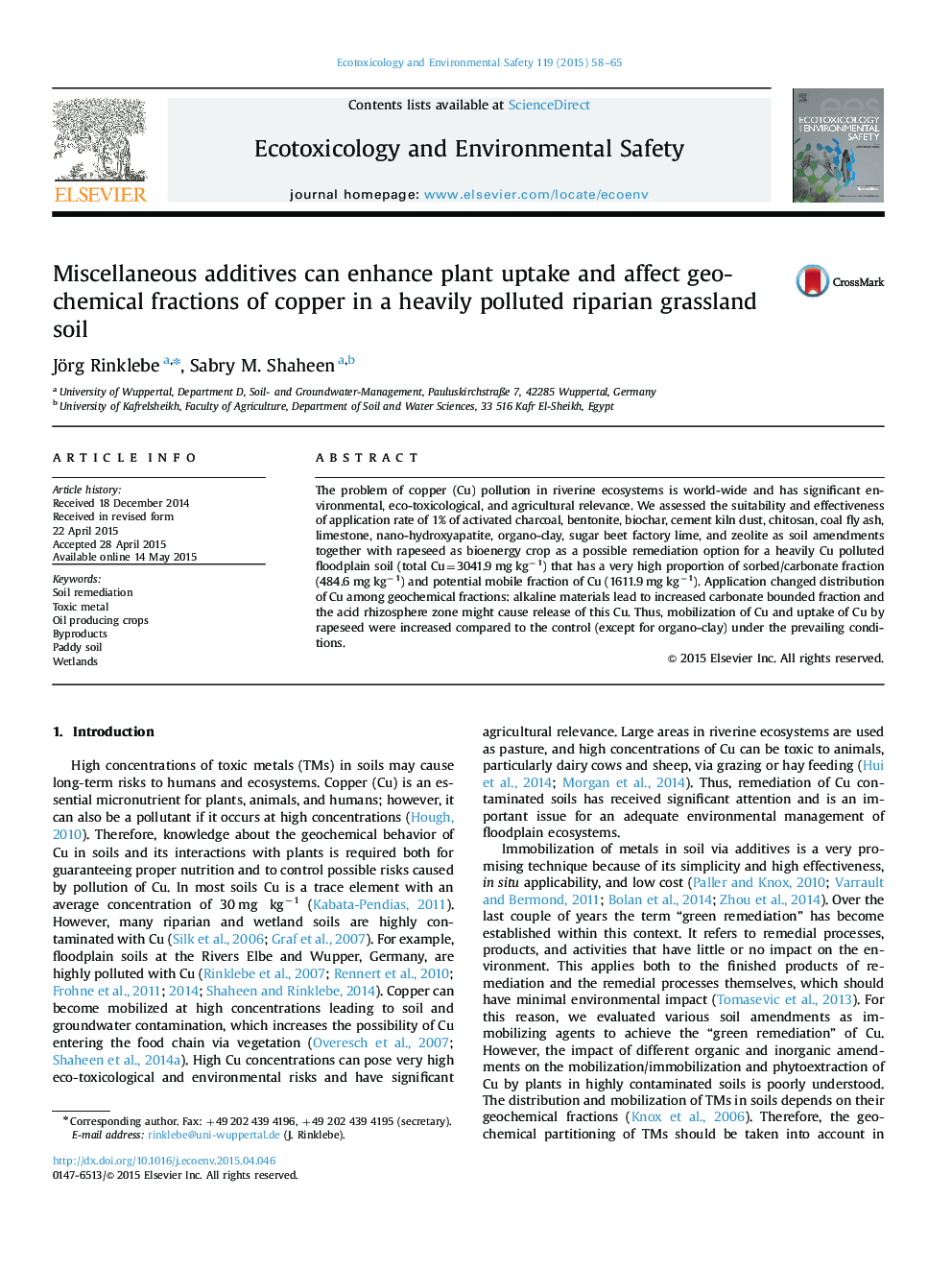| Article ID | Journal | Published Year | Pages | File Type |
|---|---|---|---|---|
| 4419628 | Ecotoxicology and Environmental Safety | 2015 | 8 Pages |
•Application of amendments changed distribution of Cu among geochemical fractions.•Alkaline and liming materials lead to increased sorbed/carbonate fraction of Cu.•Acid rhizosphere zone might cause release of sorbed/carbonate bounded Cu.•Mobilization and uptake of Cu by rapeseed were increased compared to control.•Application rate seems low for immobilization of Cu in this highly polluted soil.
The problem of copper (Cu) pollution in riverine ecosystems is world-wide and has significant environmental, eco-toxicological, and agricultural relevance. We assessed the suitability and effectiveness of application rate of 1% of activated charcoal, bentonite, biochar, cement kiln dust, chitosan, coal fly ash, limestone, nano-hydroxyapatite, organo-clay, sugar beet factory lime, and zeolite as soil amendments together with rapeseed as bioenergy crop as a possible remediation option for a heavily Cu polluted floodplain soil (total Cu=3041.9 mg kg−1) that has a very high proportion of sorbed/carbonate fraction (484.6 mg kg−1) and potential mobile fraction of Cu (1611.9 mg kg−1). Application changed distribution of Cu among geochemical fractions: alkaline materials lead to increased carbonate bounded fraction and the acid rhizosphere zone might cause release of this Cu. Thus, mobilization of Cu and uptake of Cu by rapeseed were increased compared to the control (except for organo-clay) under the prevailing conditions.
Graphical abstractFigure optionsDownload full-size imageDownload as PowerPoint slide
